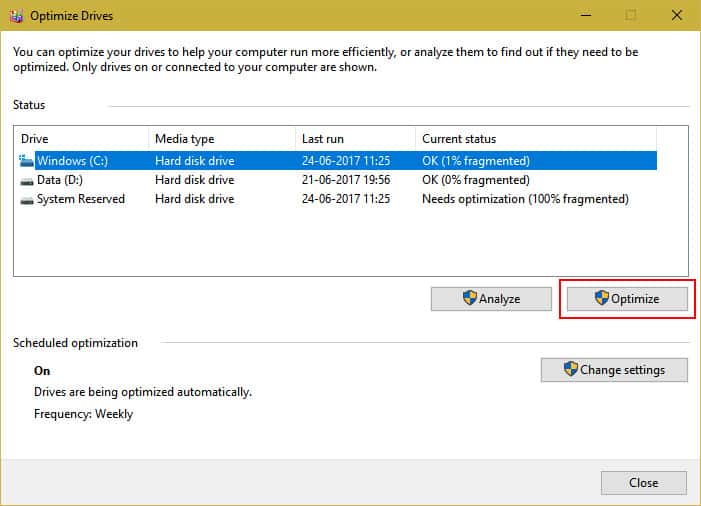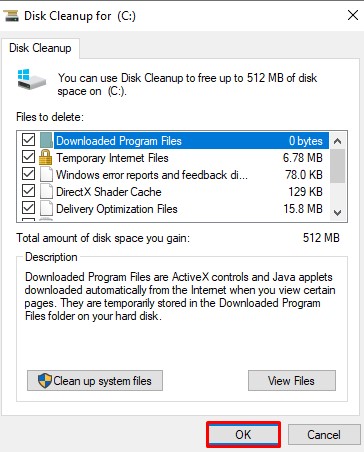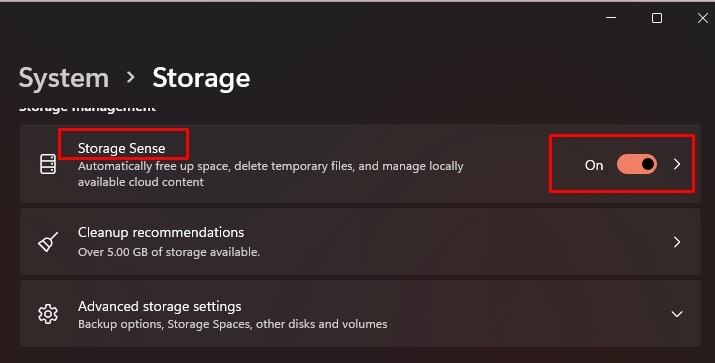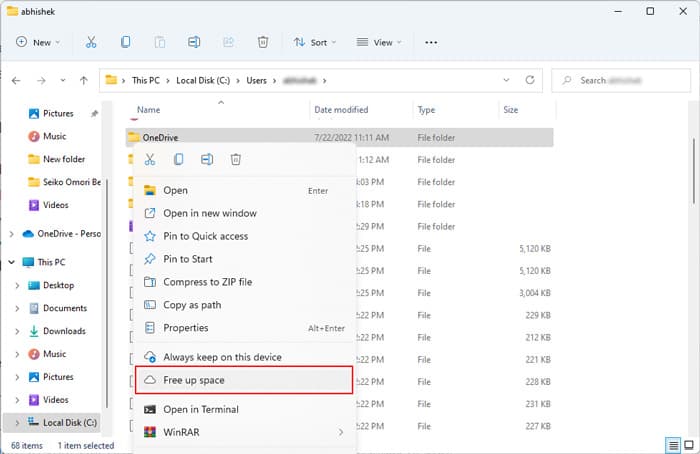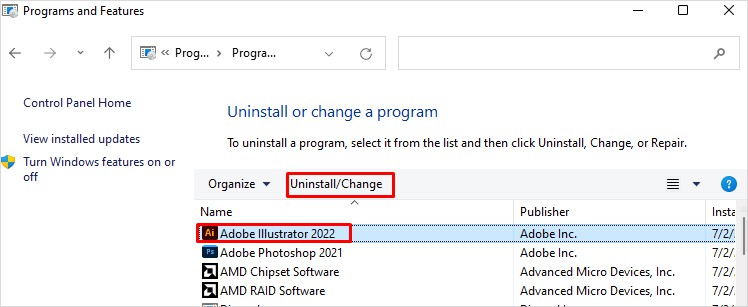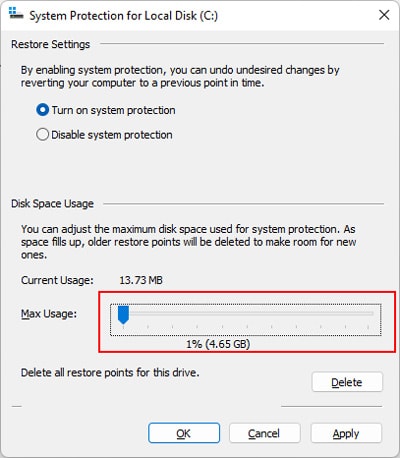If your storage space is running out or the drive is not optimized, you’ll start experiencing lags or freezes. To resolve such issues, you need to clean your C drive properly. However, since the drive contains your OS, you can’t haphazardly delete its contents. You need to use proper methods to optimize it, which we have explained below.
How to Clean C Drive
Here are the ways with which you can clean your C Drive and optimize your PC:
Defragment C Drive
Your hard drives search for free sectors to store your files. But if there’s no sufficient free space in consecutive sectors, it can only store the files on random sectors. So accessing the fragmented files takes more time. Defragmentation the disk doesn’t usually free up any space, but it’s still useful in improving your computer’s performance. If your computer starts lagging or opening files/running programs takes more time, you definitely want to defragment your HDD. However, only hard drives (HDD) require defragmentation. You can not defragment SSDs as they use a separate optimal writing process. SSD comprises of a single magnetic tape and your system doesn’t scatter the data while storing on an SSD, like it does for an HDD. It is possible to optimize SSDs. But they automatically clears data, based on frequency of usage, every 30 days or so. So, manually optimizing consumes more read/write cycles instead. Here’s how you can defragment your C drive:
Use Disk Cleanup
Disk Cleanup is the traditional Windows utility to clean your drives. You can use it to delete your temporary files, thumbnails and Recycle Bin contents, and some other files the system deems unimportant. Here’s how you can use this tool to clean your C Drive:
Enable Storage Sense
Storage Sense is the modern alternative to Disk Cleanup that Microsoft created to facilitate the automatic cleanup of your drives. You can also set a schedule along with which types of files to remove during this process. This process cleans up all your drives simultaneously. However, since drives other than C do not store any temporary files by default, Storage Sense usually just cleans the C Drive. Here are the necessary steps for this method: If you want to run this process now, click Clean now or Run Storage Sense now.
Delete Temp Files
While Disk Cleanup and Storage Sense remove most temporary files, your computer still keeps storing some temporary files. We recommend deleting them from their save location through the file explorer. Here’s an easy way to do so:
Clear System and Browser Cache
Your system stores many types of cache files for different purposes. Several processes like File Explorer, DNS, Windows Store, Windows Update, etc., all store cache which accumulates to a large size. Your browsers also use particular storage space to store their cache and cookies. You can delete such files to clean your C Drive. We have a dedicated article on How to Clear Cache on Windows. Check it out to learn how to clear all cached files on Windows system as well as web browsers.
Make OneDrive Online Only
OneDrive uses 200 MB of your storage space to sync your files to the cloud. However, you can make some files and folders online-only. These files and folders only appear on the cloud, and your local drive no longer stores them. Here are the necessary steps for this procedure: You can also make OneDrive online only from Storage Sense settings on Windows 10.
Uninstall Unnecessary Applications
Many users have a habit of installing new applications and forgetting about the apps after they stop using them. Such applications can take up considerable space on your C drive. So it’s always a good practice to periodically check for and uninstall unnecessary applications. Here’s how you can do so: Some users also copy applications from another system and use them without installation. This process is not possible for many applications, but running some programs without properly installing them is possible. If this is the case for you, don’t forget to navigate to their location using the file explorer and delete such apps if you don’t need them any longer.
Delete Unnecessary Files
You may have many unnecessary files on your system apart from the applications. Some applications leave behind their user files even if you uninstall them. So you need to manually search for these files and delete them to clean your C drive. The remnants of the old programs are usually present in the AppData folders. You would want to check our article on opening and using AppData to learn how to search for and delete such files. You should also go through your Desktop, Documents, Downloads, Music, Pictures, and Videos folders and delete unneeded files and folders. Third-party cleaners available on the internet are also of great use in automatically determining unnecessary and duplicate files and removing them. So, you can also use one if you want.
Disable Hibernation
While disabling hibernation may not seem like it does anything to clean your C drive, the process reserves some storage space. With hibernation enabled, your system stores all active files, folders, and some RAM contents on a hiberfil.sys file while hibernating the PC to restore them the next time you boot. This file reserves a storage space equal to 20-40% of your RAM if hibernation is enabled. So, if you have 16 GB RAM, this file uses about 4-7 GB of space. If you don’t actually use hibernation, you can disable it to free up this space. Doing so has no impact on the normal shut down and powering up process, except maybe slightly increasing startup time. To disable hibernation mode,
Reduce Space For Restore Points
System Restore is a protection feature that allows creating restore points or snapshots, which your system can revert to if you encounter any issues. Your system allocates a maximum of specific storage space to store the restore points. If any of this space is free, System Restore uses the free space to create new restore points. And if none is available, it deletes the oldest restore point to free up space. It is possible to change the maximum allocation to make more space available for other purposes. Here’s how you can do so: You can also disable System Restore completely from Configure > Disable system protection. However, we don’t recommend doing so you may need this process in case of any system issues.
Related Question
Can I Use DiskPart Clean Command to Clean C Drive?
The clean command on the DiskPart CLI actually erases all the contents of a partition. You can’t run this command as this drive contains your OS. However, it is possible to do so from a Windows installation media’s WinRE. But cleaning the drive removes all OS files as well, so you need to reinstall windows to actually use a PC. If you find it tedious to use all the methods we have mentioned above, you can reinstall windows to clean your C drive. However, remember to backup your necessary files before doing so. After the reinstall, install all necessary applications and restore the backed up files.
